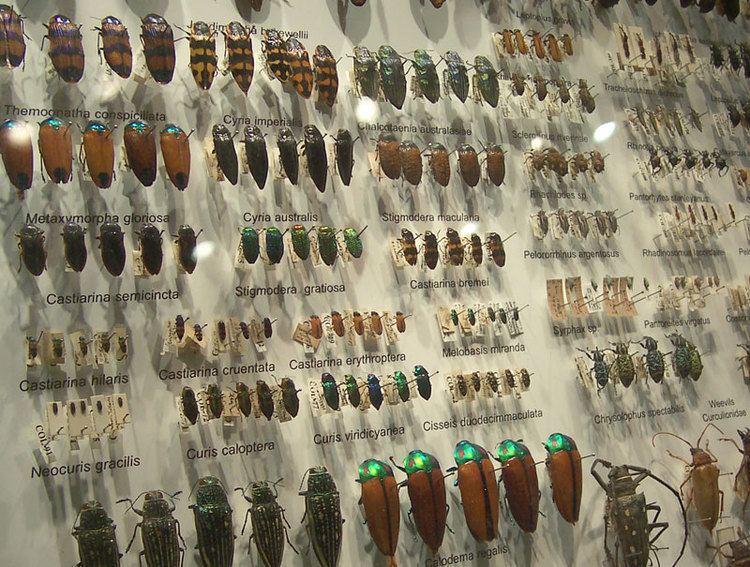 | ||
Insect collecting refers to the collection of insects and other arthropods for scientific study or as a hobby. Because most insects are small and the majority cannot be identified without the examination of minute morphological characters, entomologists often make and maintain insect collections. Very large collections are conserved in natural history museums or universities where they are maintained and studied by specialists. Many college courses require students to form small collections. There are also amateur entomologists and collectors who keep collections.
Contents
Historically insect collecting has been widespread and was in the Victorian age a very popular educational hobby. Insect collecting has left traces in European cultural history, literature and songs (e.g., Georges Brassens's La chasse aux papillons (The Hunt for Butterflies)). The practice is still widespread in many countries, and is particularly common among Japanese youths.
Collecting techniques
Insects are passively caught using funnels, pitfall traps, bottle traps, malaise traps, flight interception traps and other passive types of insect traps, some of which are baited with small bits of sweet foods (such as honey). Different designs of ultraviolet light traps such as the Robinson trap are also used by entomologists for collecting nocturnal insects (especially moths) during faunistic survey studies. Aspirators or "pooters" suck up insects too small or delicate to handle with fingers.
Several different types of nets are commonly used to actively collect insects. Aerial insect nets are used to collect flying insects. The bag of a butterfly net is generally constructed from a lightweight mesh to minimize damage to delicate butterfly wings. A sweep net is used to collect insects from grass and brush. It is similar to a butterfly net, except that the bag is generally constructed from more rugged material.The sweep net is swept back and forth through vegetation quickly turning the opening from side to side and following a shallow figure eight pattern. The collector walks forward while sweeping, and the net is moved through plants and grasses with force.This requires a heavy net fabric such as sailcloth to prevent tearing, although light nets can be used if swept less vigorously. Sweeping continues for some distance and then the net is flipped over, with the bag hanging over the rim, trapping the insects until they can be removed with a pooter. Other types of nets used for collecting insects include beating nets and aquatic nets. Leaf litter sieves are used by coleopterists and to collect larvae.
Once collected, a killing jar is used to kill required insects before they damage themselves trying to escape.However, killing jars are generally only used on hard-bodied insects. Soft-bodied insects, such as those in the larval stage, are generally fixed in a vial containing an ethanol and water solution.
Storage and curation
The usual method of display is in a glass-covered box, with the insects mounted on specially made non corrosive insect pins stuck into suitable foam plastic or paper covered cork at the bottom of the box. Common pins are not used. Very small insects may be pinned on "minuten" (very tiny headless pins) stuck into a block of foam plastic on a standard insect pin. Alternatively they may be glued onto a small piece of card on the pin. There are specific procedures for proper mounting that are used to show off the insects' essential characteristics. Techniques and equipment may be varied to deal with various species or requirements. For example, one or both of the wings of a beetle or grasshopper can be pulled open and fanned out to show the wing structure that otherwise would be hidden. At least the date and place of capture should be written or computer printed onto a piece of paper or card transfixed by the pin. This is called a data label.
Rare insects, and/or those from distant parts of the world may also be acquired from dealers or by trading. Some noted insect collections have been sold at auction.
Popular culture
Pokemon creator Satoshi Tajiri's childhood hobby of insect collecting is the inspiration behind the popular video game series.
